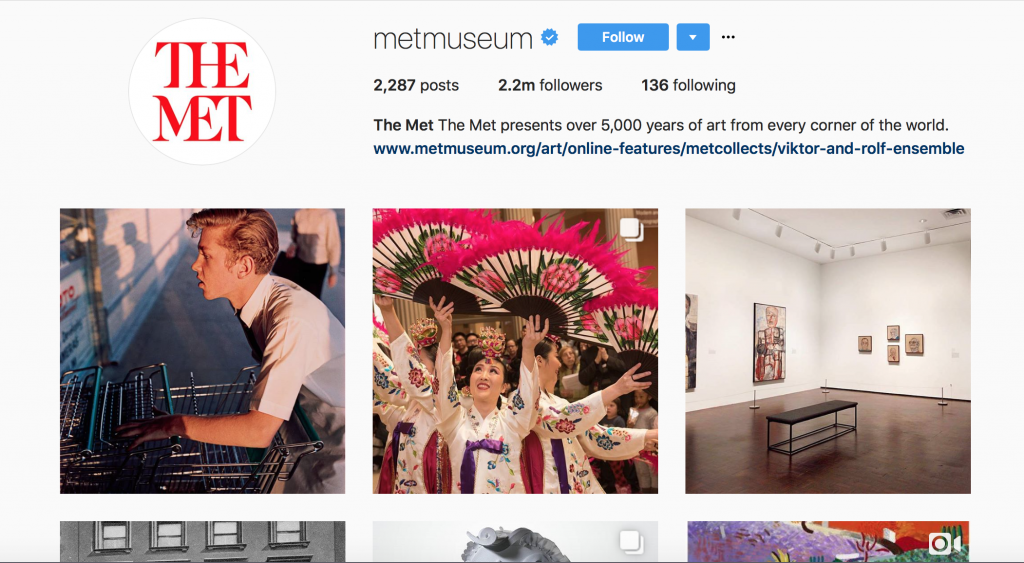Art beyond museum walls: What art means in the age of social media
By Jeanie Lo
In the age of Google, we can easily pull up a picture of “Starry Night” by Vincent van Gogh on the internet and send it to our friends and family on iMessage. Unlike people before the age of Google, we don’t need to go to New York and walk into MoMA in order to admire everybody’s favorite van Gogh piece — heck, we don’t even need to be in the States for that. That’s the power of the digital age and social media in the world of art institutions.
As an intern in The Metropolitan Museum of Art’s (The Met) communications department, my work on The Met’s social media made me rethink how Facebook, Twitter, Instagram and Pinterest can serve the museum’s mission to bring “Life to arts and art to lives.”
My task was to select different artworks in The Met’s permanent collection to go up to Facebook each day for the “Featured Artwork of the Day” series. While I don’t write the descriptions — because that’s the curator’s job — I realized my job requires a lot of decision-making.
As an international student among an incredibly diverse staff in a museum with an incredibly diverse collection, I wanted to feature artworks that allow people from different parts of the world see their cultures and experiences represented on The Met’s Facebook page. The Met has a collection that spans more than 5,000 years of history, so I think social media is poised to leverage this power for good.
I searched for artworks from Islamic traditions, Iranian objects, Chinese costumes, Christianity paintings, sculptures of babies, animals, paintings of lovers…. the possibilities were endless. At the same time, I decided against artwork that could be problematic or hateful – such as paintings of rape (which was all the rage in Renaissance art).
I had a lot of fun doing this task. I looked up festivals celebrated in different parts of the world and found images that I think can relate to each of those festivals, such as featuring African art and abolitionist sculptures for Black History Month, a Hindu god Vishnu for Holi or an Amazon warrior for Women’s History Month.
So as I select the images, I thought of the people who would want to see their culture and experience preserved and highlighted. I imagine as they go on Facebook, they could think, “I can relate to this!” That’s what I want to do, to bring art into people’s lives and touch lives, to invite people to come to the museum and see the objects for themselves and to facilitate audience forming relationships with artworks.
My supervisors posted a painting, “Springtime” by Pierre-Auguste Cot on Instagram on Valentine’s Day. It warmed my heart to see people recounting in the comment section how this is one of their favorite works in the collection, or how this brings them joyful memories, back to childhood, back to when their love for art began. I searched for this painting in the museum yesterday morning before opening hours. When I found it, I thought of how this sweet painting touched lives and what it meant to people. This process changed my relationship to the painting as well — before that I was just paying attention to how this is a work in the context of Romanticism — but now it’s, “Thousands of people see themselves in this painting, they can relate to the lovers in it.”
In the age of Google, museums can easily participate in not just scholars’, but the public’s dialogue about what they think about art and what art is — that’s the power of social media in the world of art institutions.



























